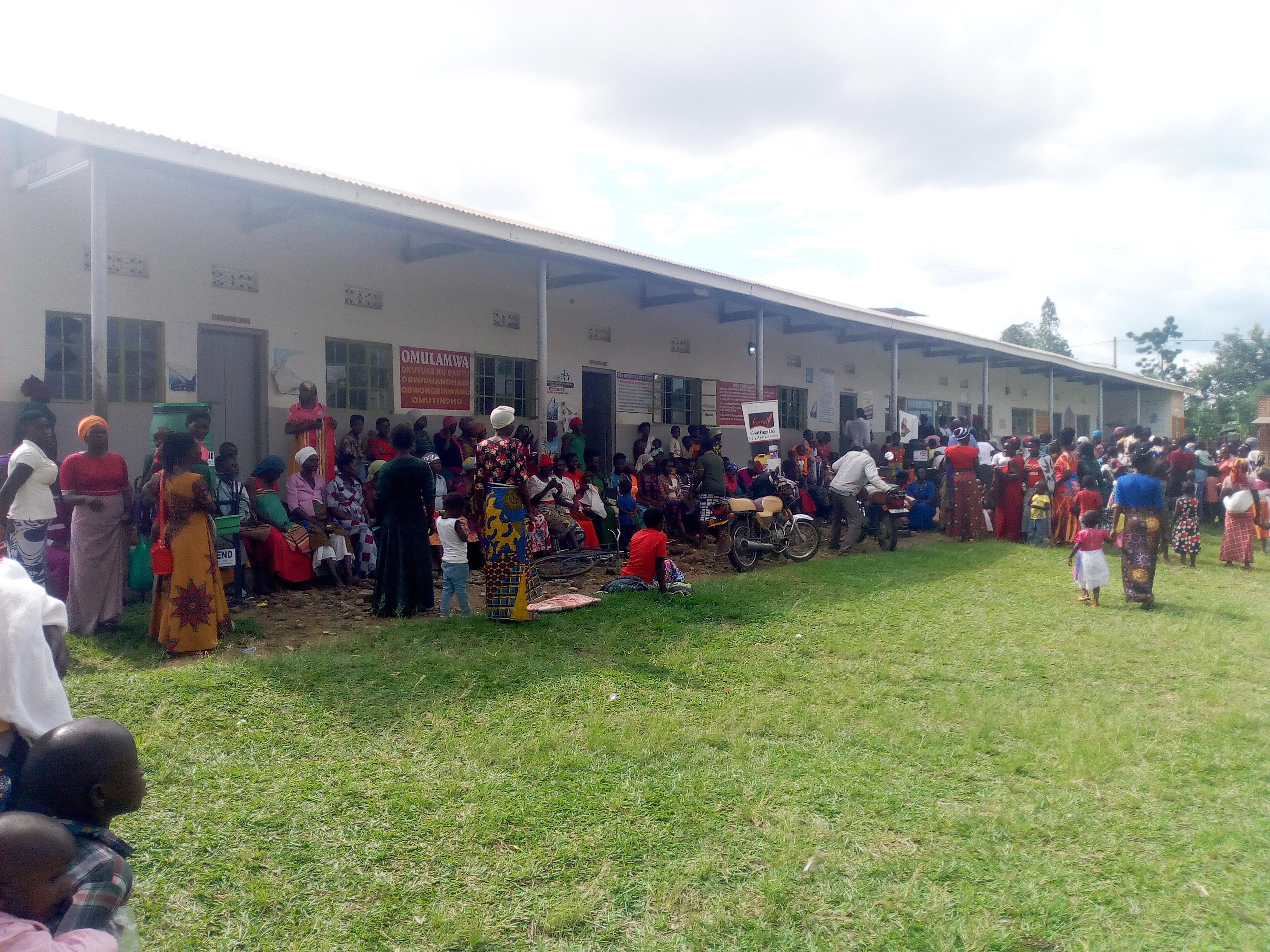Sub-county loses 100 children to malaria fever in one month

Residents line up at Magada Health Centre III in Namutumba District to get mosquito nets on May 6. Area leaders say some of the residents use the mosquito nets to trap white ants. PHOTO | RONALD SEEBE
What you need to know:
- Mr Jafari Kasalawo, the sub-county chairperson, said at least 5,000 children below the age of five years in the sub-county tested positive for malaria last month, but only 2,000 managed to go for treatment.
Authorities in Namutumba District have decried the rate at which children below the age of five are dying of malaria in Magada Sub-county.
Health workers attributed the high death rate to locals’ reluctance to seek treatment in time and failure to sleep under mosquito nets.
The officer-in-charge of Magada Health Centre III, Ms Florence Wamwendere, said last month, a total of 100 children died of malaria, describing it as “the first kind of death rate recorded at the facility.
“Before the Covid-19 pandemic, around 70 children in the sub-county were dying of malaria, but the number has increased to 100 and we expect it to double,” she said.
“People who used to take their children to private hospitals or clinics for special [malaria] treatment can no longer afford to do so because their businesses were affected by Covid,” Ms Wamwendere added.
She called for concerted efforts to sensitise parents on the benefits of sleeping under mosquito nets and always testing for malaria and getting treatment.
“After getting [mosquito] nets, people use them for fishing and trapping white ants. This is where we want police and other security organs such as Gombolola Internal Security Organisation [GISO] and LC1 chairpersons to take action,” she added.
Mr Jafari Kasalawo, the sub-county chairperson, said at least 5,000 children below the age of five years in the sub-county tested positive for malaria last month, but only 2,000 managed to go for treatment.
“The challenge we have is how to manage such cases at the health centres given the shortage of drugs in the government units,” he said, adding that Magada is one of the sub-counties in the district with the highest malaria cases.
Mr Ali Balimumiti, the sub-county chief, said despite several interventions to fight malaria in the district, including indoor residual spraying and distribution of mosquito nets, locals lack information on malaria transmission and prevention.
“As authorities, we are worried because this is a big number within one month. As a result, the sub-county leadership is going to start arresting whoever is found using a mosquito net to trap white ants,” he decreed. Residents, however, claim that the government is not doing enough to fight malaria.
Ms Farida Musenero, a resident of Magada Village, urged the government to equip its facilities with blood for transfusion, saying in some instances, the children become malnourished, anaemic and die due to lack of blood.
Malaria
Malaria kills 16 Ugandans daily and causes an estimated annual economic loss of $500 million (Shs1.8 trillion) due to treatment costs and work time lost. It contributes to 30 percent of outpatient visits, 20 percent of hospital admissions, and costs a family at least Shs32,000 per episode of malaria.
Every year, more than 400,000 people die of malaria and 94 per cent of these deaths occur in Africa, according to World Health Organisation.




